Polish Airforce in Exile- part 2 “Repeat please!”
As the situation in France began to deteriorate a large part of the Polish Air Force contingent withdrew to the
UK. However, the RAF Air Staff were not willing to accept the independence and sovereignty of Polish forces. Now this wasn’t just an attitude of superiority and disparagement on the part of the RAF, (by many accounts that existed too) but there were refugees, exiled armed forces and government officials from many nations all looking to the
UK to provide them the tools and resources to take the fight back home and the Polish exiles and their Air Force were not the only ones.
And so systems of regulations were put in place to maintain RAF command over the whole. Foreign pilots, no matter how highly experienced would all begin at the lowest flying rank of “Pilot Officer” and had to wait in training centres, learning English command procedures and language (such as “Repeat Please.”), even while the RAF suffered heavy losses due to lack of experienced pilots.
The first Polish squadrons formed were 300 and 301 bomber squadrons and then 302 and 303 fighter squadrons.
300 and 301 were the first Polish units to be made operational. Initially equipped with, yes you guessed it, another horribly underpowered and all-round unfit for the job aircraft. This time it was the Fairey Battle. Anyone else sensing a theme emerging?
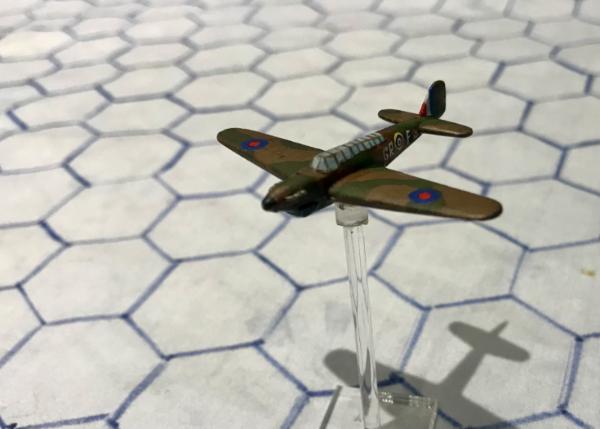
The RAF’s notoriously sub-optimal light-bomber was being hastily shuffled away from front line service but true to form the eager Polish airmen would take anything with wings that would let them drop a bomb on the enemy.
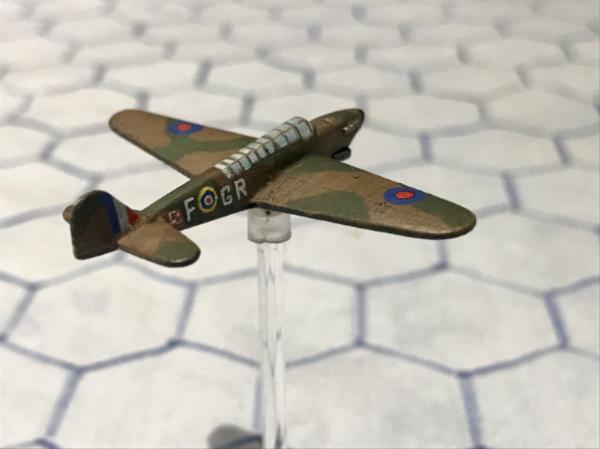
Their early missions included the night bombing of the Operation Sea-lion barges at Boulogne.
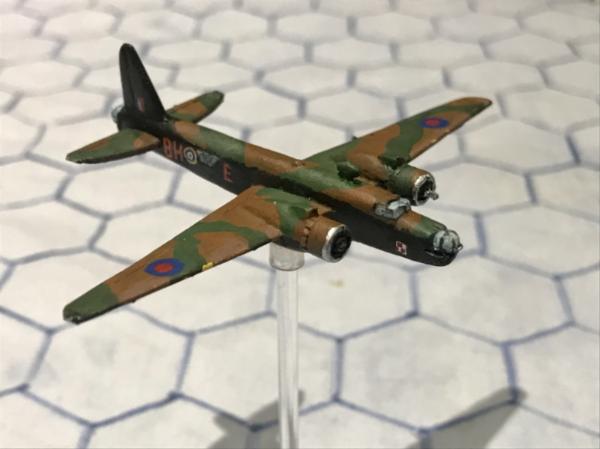
Both units were re-equipped with Wellingtons by November 1940 and continued to operate as part of No.1 (Bomber) Group, taking part in the first Thousand-Bomber Raid against Cologne (Operation Millennium), and the second thousand-bomber raid on Essen in May and June 1942.
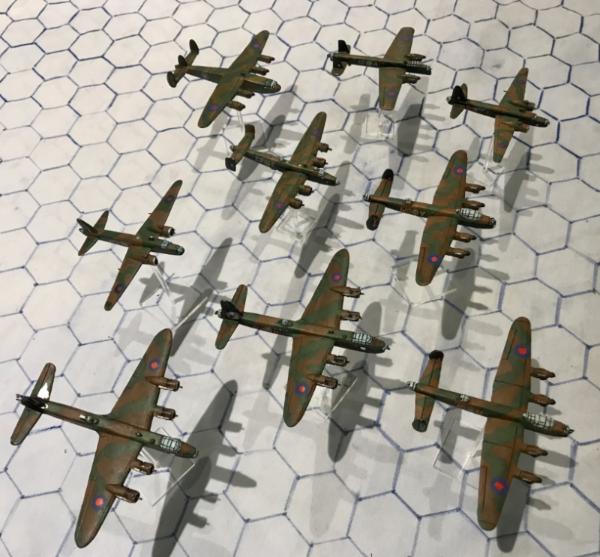
I threw together a collection of my RAF bombers that would have taken part in these raids (an an Avro York in the back there because from a distance it looked the part)
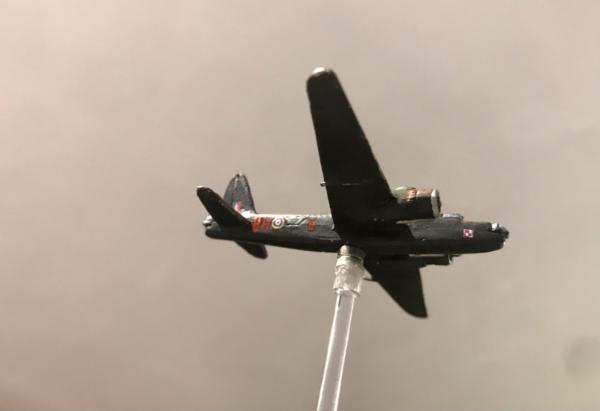
In actual fact the vast majority of bombers on these raids were twin engined Wellingtons as the numbers of big 4 engined aircraft simply weren’t there yet. So hard-pressed for suitable aircraft to make up the numbers they even brought some old Whitleys back out of retirement just for the occasion!
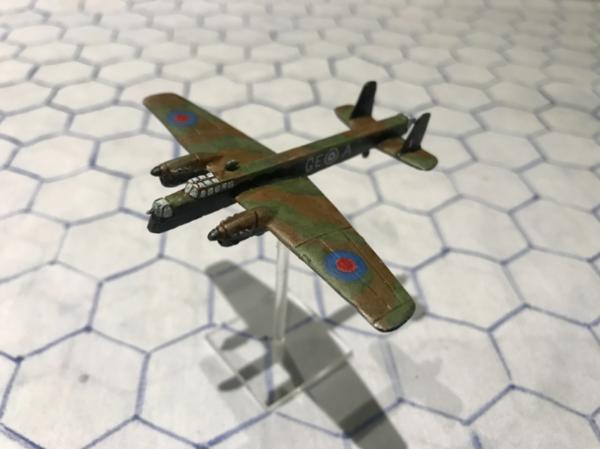
Actual Poles in Whitleys still to come.
In April 1943 due to losses 301 squadron was disbanded and remaining crews and personnel were consolidated into 300 squadron who were now converting to Avro Lancasters. (I probably should’ve painted up a 300sq Lancaster for this, but sadly I didn’t.)
Some elements of 301 Volunteered for a new effort that would form C Flight of 138 Squadron, an RAF Special Duties Flight operating three Handley Page Halifaxes and three Consolidated Liberators as special transport bombers.
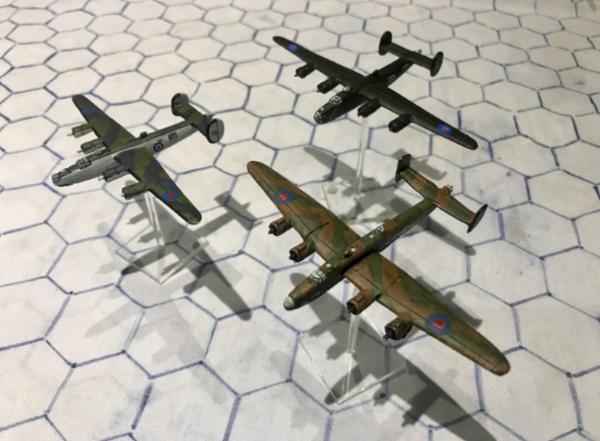
In November 1943 they were deployed to Libya and then on to Italy and became No. 1586 (Polish Special Duties) Flight.

Missions included partisan supply drops and agent insertion often involving seriously long haul flights over occupied Europe and into central Poland in support of the Warsaw Uprising in August 1944. For which the Polish C-in-C Kazimierz Sosnkowski named them Obrońców Warszawy (Defenders of Warsaw)
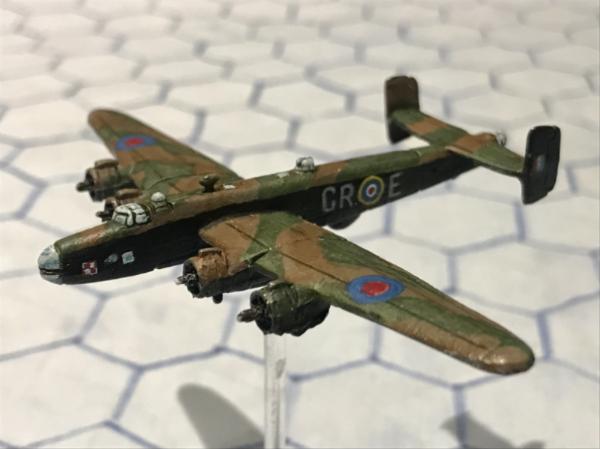
This is
HP Halifax no. JP222 (GR-E) which was Damaged by flak during a supply sortie to Warsaw but crashed into the sea when returning to Brindisi with the loss of the whole crew: P/O Molinski, F/Sgt Beer, Sgt Kuhn, Sgt Milewski, Sgt Martyniuk, Sgt Kozlowski, Sgt Minowski and observer F/Lt Wolf.

No matter what the RAF might have called it, C Flight, or 1586 or whatever, the Polish crews and authorities still referred to it as No. 301 Squadron (Land of Pomerania.) and lobbied the RAF successfully to retain the old GR squadron code from 301 on their aircraft. The RAF eventually gave in renaming the unit as No. 301 Squadron (special duties / Transport Command) in November 1944.
Now let’s take a look at the fighters.
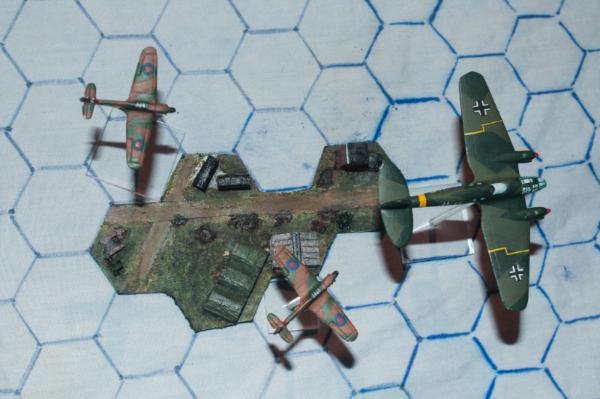
The fighter squadrons, 302 and 303 first saw action in the third phase of the Battle of Britain in late August 1940 flying Hawker Hurricanes and quickly showed themselves to be highly effective. Polish flying skills were well-developed and the pilots were regarded as fearless and sometimes bordering on reckless.
303 Sqd Hurricane V6665
RF-J

Hurricane V6665 flew a total of 19 operational sorties during its short 20 days with 303 Squadron claiming four enemy aircraft destroyed.
Sgt Tadeusz Andruszkow claimed a kill in V6665, but was shot down and killed in the aircraft the next day. He was only 19 years old when he died.
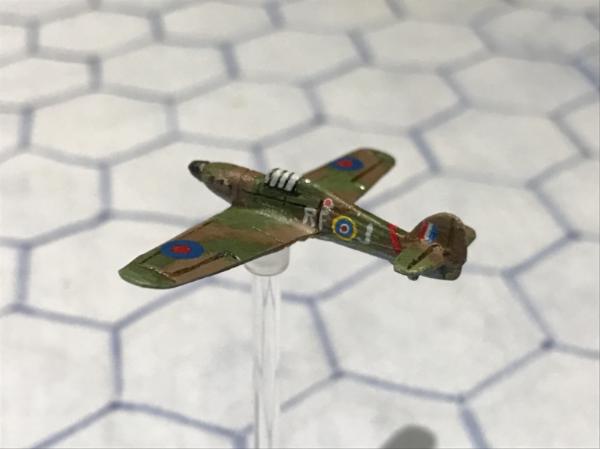
Polish success rates were very high in comparison to less-experienced British Commonwealth pilots. 303 squadron became the most efficient RAF fighter unit at that time, to the point that RAF commanders protested when government censors refused to allow this fact to appear in the press.
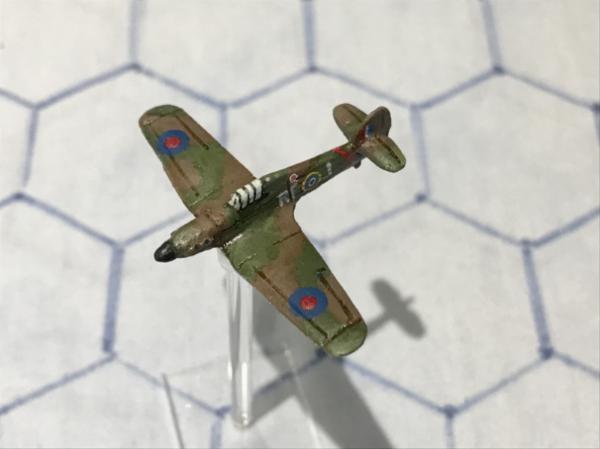
303 Squadron is now accepted as being the highest scoring RAF fighter squadron of the Battle of Britain, with the best kills to loss ratio of all RAF units involved in the Battle, despite being in the front line for only 42 days.
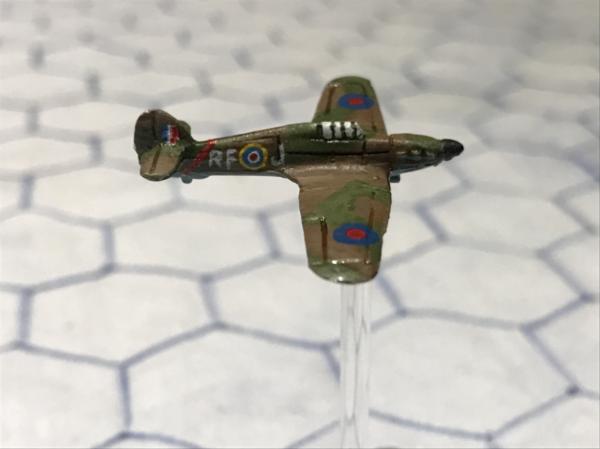
Later, further Polish squadrons were created: 304 (bomber, then Coastal Command), 305 (bomber), 306 (fighter), 307 (night fighter), 308 (fighter), 309 (reconnaissance, then fighter), 315 (fighter), 316 (fighter), 317 (fighter), 318 (fighter-reconnaissance) and 663 (air observation/artillery spotting).
In August 1942 No. 309 Polish Fighter-Reconnaissance Squadron became the first Polish unit converted to the American-built Mustang Mk1.
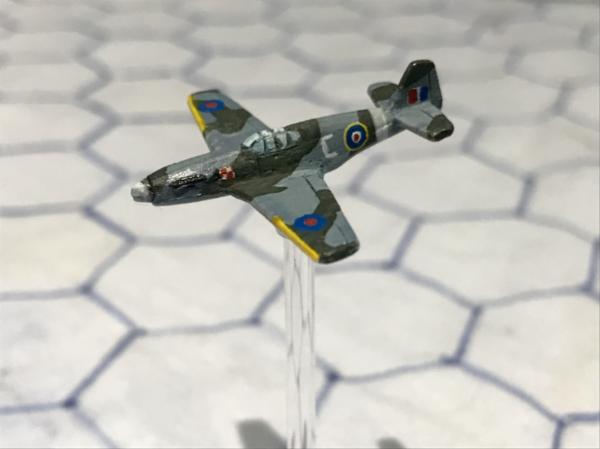
The Mustang’s operational range was greatly debated among the 309 pilots. At the time it was considered common knowledge that a Mustang couldn’t be flown from the east coast of Scotland to Norway and back, but Polish pilot and aeronautical engineer F/Lt Janusz Lewkowicz disagreed. He submitted his calculations to the contrary to Group
HQ but to no avail.
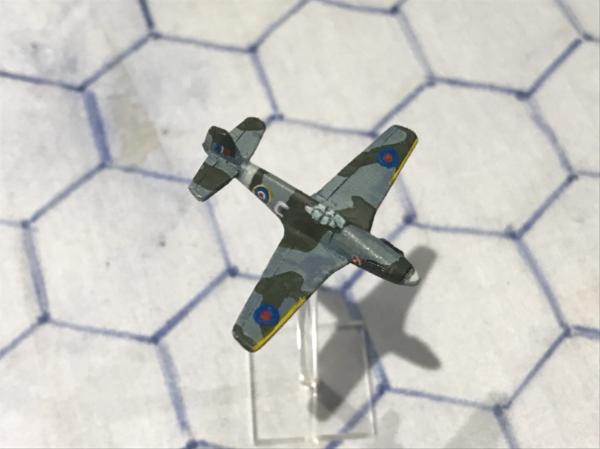
Not content with being ignored, Lewkowicz in typical Polish style did whatever he felt necessary to prove his point and made an unauthorized flight to Norway on the 28th September, strafing a military installation at Stavanger and returning safely to Scotland at Dunino having covered some 400miles over open water. It was a significant achievement and not so easy to ignore.
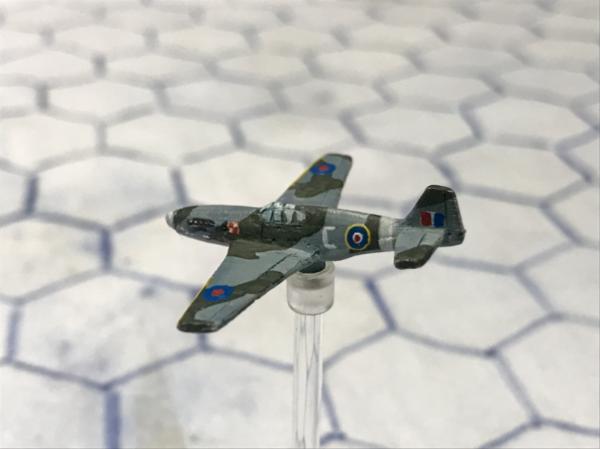
For his flight, Lewkowicz was reprimanded for breaking the regulations and at the same time sincerely congratulated by Air Marshall Barratt. As word of the flight got out planners began to quickly reevaluate the capabilities of the Mustang, finding targets as far away as the Dortmund-Ems canal in Germany now within reach.
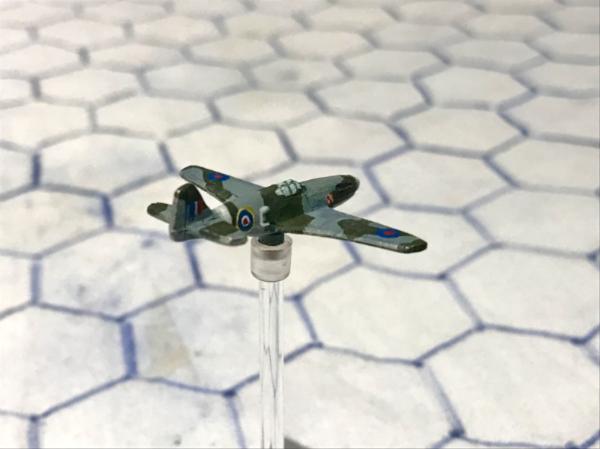
But the Polish airforce in exile were by no means confined to the defence of the British Isles. In late 1942 Polish Air Force Staff Command requested RAF permission to send a group of specially chosen pilots to the North African theatre of operations to acquire experience in operating as a part of a tactical air force in preparation for future Allied landings on the European continent.
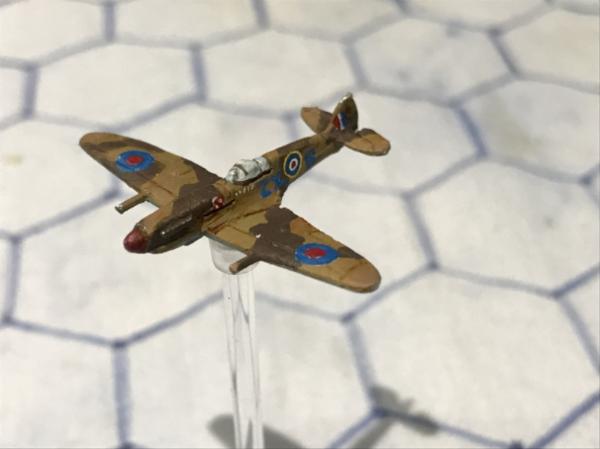
Our old friend and first allied ace of the war Stanisław Skalski was given command and so was born "Cyrk Skalskiego" (Skalski's Circus) the Polish Fighting Team (Polski Zespół Myśliwski) a special flight consisting of fifteen experienced Polish fighter pilot volunteers operating out of Goubrine Airfield in Tunisia as “C Flight” of No. 145 Squadron.
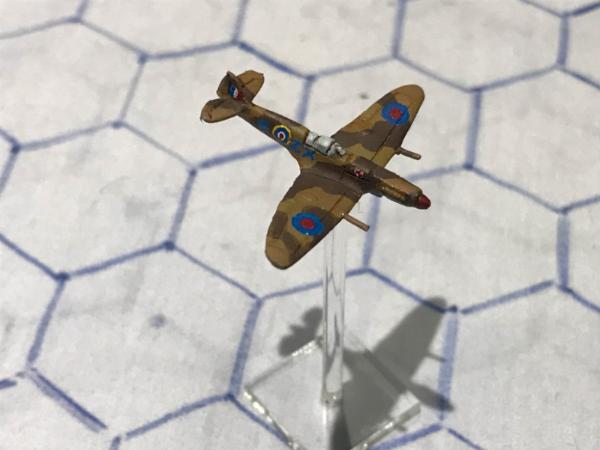
The Polish Fighting Team were equipped with Spitfire Mk IXCs. This is ZX-6 flown by CO Stanisław Skalski himself.
The PFT gained a reputation for combat effectiveness from March to May 1943 destroying 25 enemy aircraft with another 3 probable and 9 damaged. Flying Officer Mieczysław Wyszkowski was the only casualty in the PFT, shot down and taken prisoner.

Following the surrender of the German Army in Africa on 13 May, the PFT was disbanded.
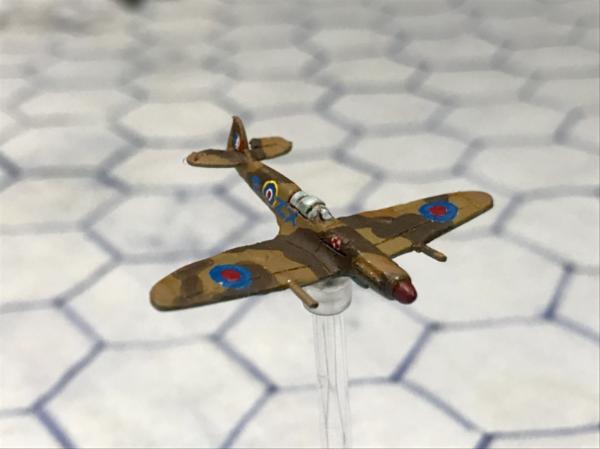
Skalski then became the first Pole to command an RAF squadron when he was appointed commander of No. 601 (County of London) Squadron who he led during the invasion of Sicily and the invasion of Italy also flying the Spitfire.
Skalaski would go on to be appointed commander of No. 133 Polish Fighter Wing in April 1944, then flying the Mustang Mk III.
A brief interlude if you’ll indulge me to mention another group of Eastern-European, often overlooked pilots within the RAF; the Czechoslovak airmen, many of whom were syphoned off from operational duties to take up a transport role, initially with either 24 or 511 Squadron. 511 squadron was based at RAF Lyneham from October 1942. Their role was to carry VIPs and priority freight to the Middle East.

In 1943, the Squadron flew the Prime-Minister, Winston Churchill, to the War Conference in Casablanca.
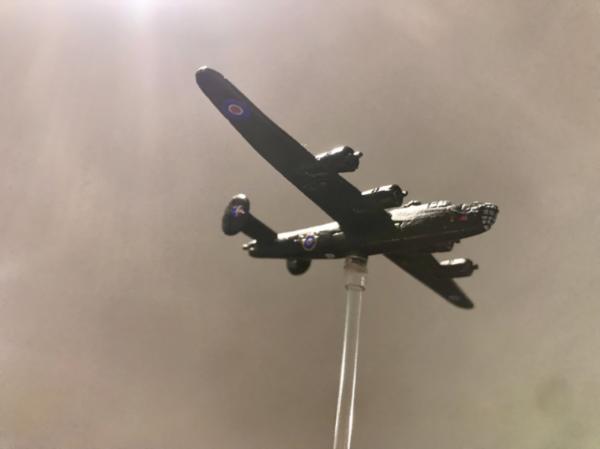
(We’ve met this plane before in the VIP collection.)
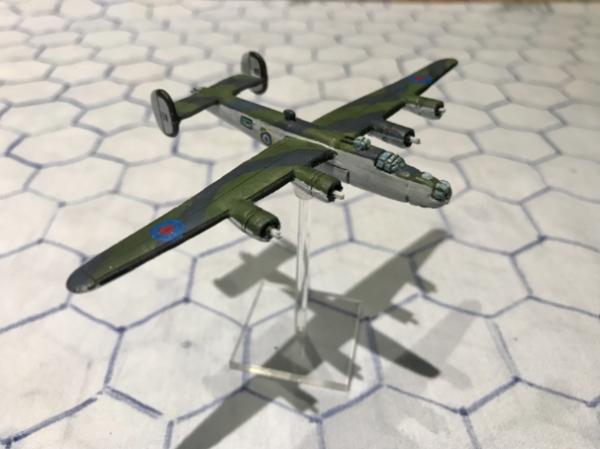
In July 1943 one of 511 sqaudron’s B-24 Liberators flown by Flt/Lt Eduard Prchal (he had earlier flown Hurricanes fighters during the Battle of Britain with 310 Squadron, Beaufighters with 68 Squadron and had also served with 24 Sqn) AL523 crashed on take-off from Gibraltar in July 1943.
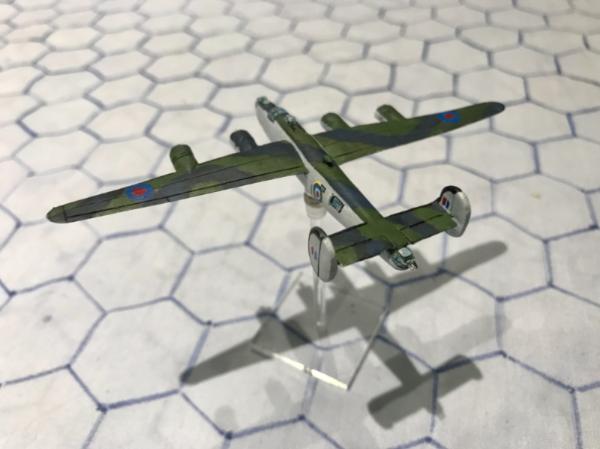
On board were the Polish Prime Minister (in exile) General Władysław Sikorski and his entourage. The aircraft dived into the sea and all aboard were killed, with the exception of the pilot Prchal.
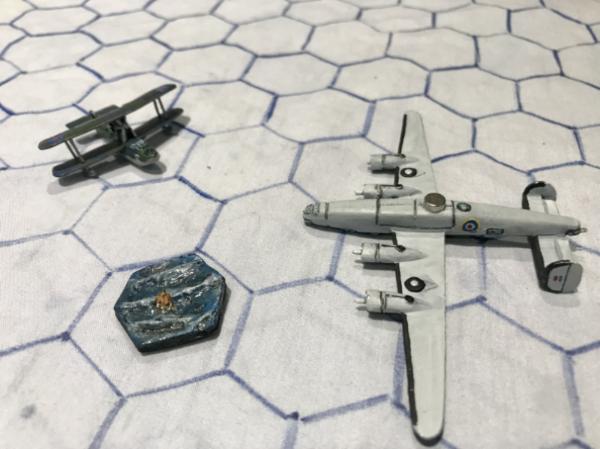
The blow to the Polish government in exile was immense and rumours about the incident flew back and forth. However, Prchal was cleared of any wrongdoing or negligence and later returned to and resumed his duties with the RAF.
General Sikorski's death marked a turning point for Polish influence amongst the Anglo-American allies, and in many ways ended any hopes of Poland coming out of the war with any real political independence. No Pole after him would have as much sway with the Allied politicians, and the Allies had no intention of allowing Sikorski's successor, Stanisław Mikołajczyk to threaten the alliance with the Soviets. No Polish representative was invited to attend the conferences at Casablanca or Yalta, and the non-interference stance of Soviet Russia during the Warsaw Uprising really put the final nail in the coffin for the Polish Government in Exile in London who the Soviets totally ignored.
One of the last Polish squadrons formed was fighter-Reconnaissance Squadron No. 318 “City of Gdańsk”
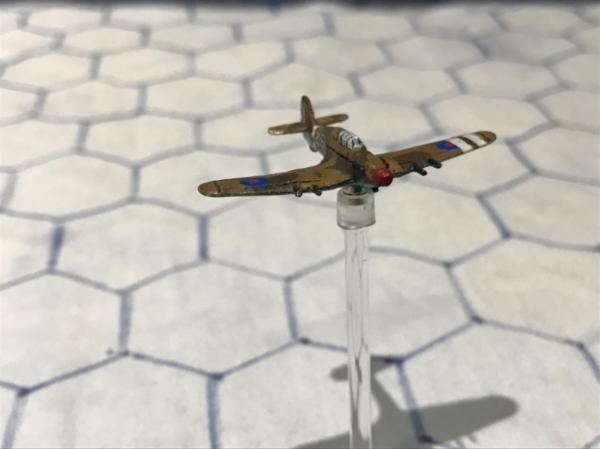
In October 1943, the squadron were dispatched to Palestine and took part in training exercise “Verile” providing the air element for a simulated invasion of Palestine by the Polish II Corps. Shortly after in January 1944 they were also part of the “Tussle” training manoeuvres which were held in Egypt.
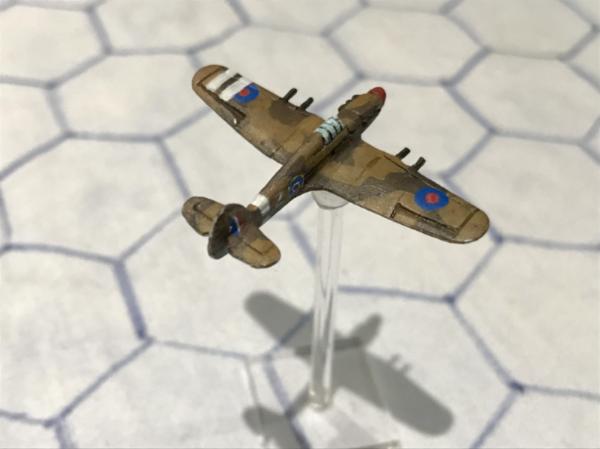
During these training exercises their ageing Hurricane IIb’s received special temporary markings. The first were two white stripes painted on the upper left wing surface. The other was a white stripe on the tail where the usual “sky band” would be.
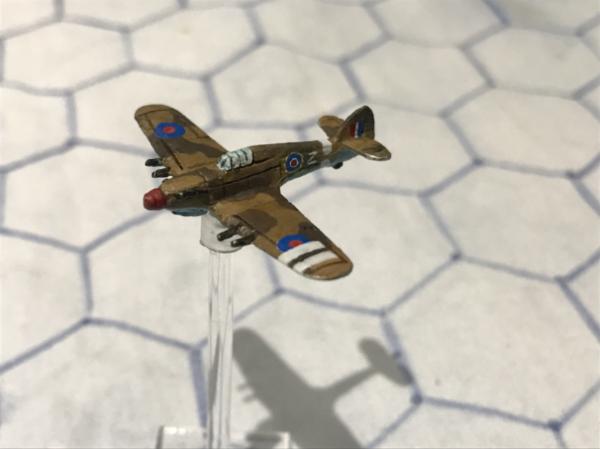
Such temporary markings of black or white stripes in various locations were common practice for flight training manoeuvres, allowing observers to keep track of the aircraft involved especially where other aircraft on patrol or lost aircraft might find their way into the area. The most famous of these temporary markings is of course the D-day invasion stripes. (So let’s have some of those now.)
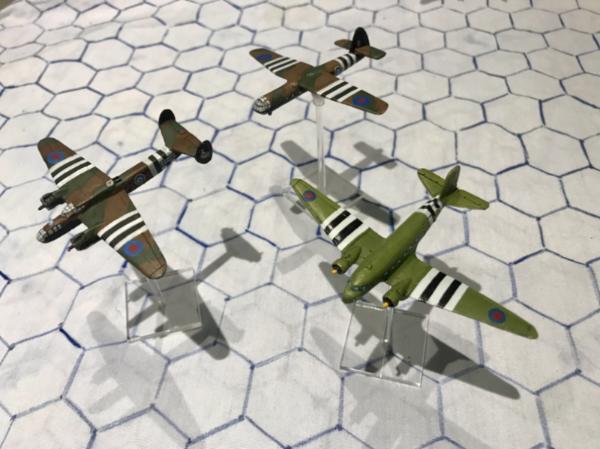
Our last call before we’re done concerns another lot of Polish Servicemen in exile whose aerial exploits shouldn’t go unmentioned. The 1st (Polish) Independent Parachute Brigade.
They trained at Ringway aerodrome Manchester jumping out of old AW Whitley Bombers.

See, I told you we’d catch up with Poles in Whitleys soon.
“Ringing the bell” was something of an issue with these old aircraft as men jumping down through the hatch in the floor had to be very careful not to crack their heads on the way out.
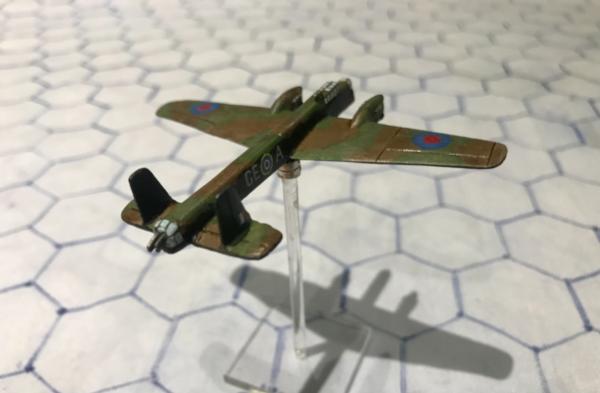
The 1st (Polish) Independent Parachute Brigade flew into enemy territory in Horsa gliders towed by Albemarles of 297 sqdn on September 18th and 19th 1944 as part of Operation Market Garden
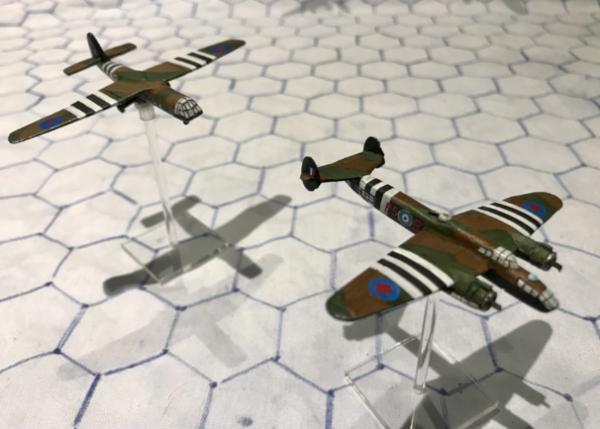
and dropped from C-47s of the 314th and 315th Troop Carrier Groups on 23rd September

earning themselves amongst other accolades an honourable mention in this miniature aviation history blog.
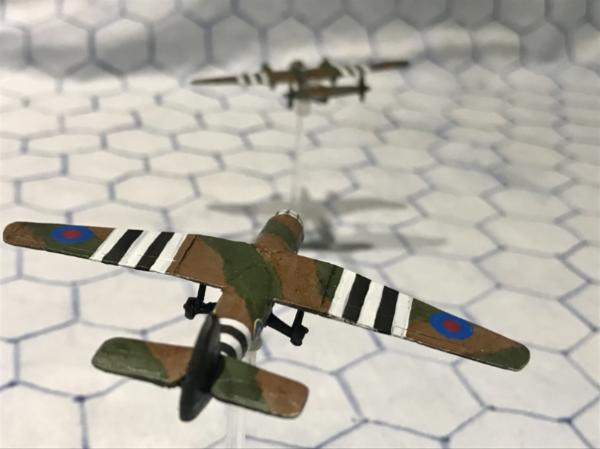
I could talk about AW Albemarles being rubbish bombers and Horsa gliders being little more than plywood tubes with wings but at the end of the day they were the tools required for this very specific job and were available in sufficient numbers when needed.
By the end of the war, around 19,400 Poles were serving in the Polish Air Force in Great Britain and in the RAF. Not to mention the thousands more in service with the other forces.
After the war, in a changed political situation with Soviet Russia pulling the strings of Poland’s new communist Provisional Government of National Unity, Poland’s old Government in Exile in London was largely ignored and brushed under the political rug. So insistent was Uncle Joe in fact that the only Poles invited to march in the Victory parade were Soviet Poles.
Subsequently only a small proportion of the Poles who had flown with or served alongside western forces chose to return to Poland. Those who did often suffered harassment and accusations of being western spies.
Our good friend Stanisław Skalski Golden Cross, Silver Cross, Four times Cross of Valour, Order of Polonia Restituta, Order of the Cross of Grunwald , DSO,
DFC & two bars…
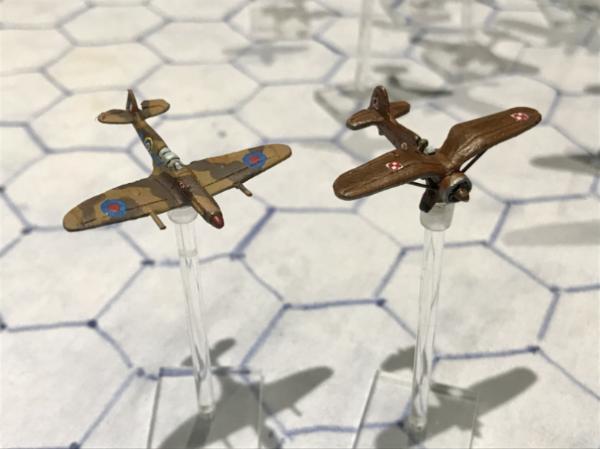
First Allied Ace of the war, 501squadron Battle of Britain pilot, Commander of 306, 316 and 317 (Polish) squadrons RAF over Occupied France, commander of the PFT in North Africa (so called "Cyrk Skalskiego"). Who commanded 601 squadron in the invasion of Sicily and of Italy and Commander of No. 133 Polish Fighter Wing, who received officers training at the US Army Command and General Staff Office and went on to command the British Air Forces of Occupation in Germany.
Yeah, THAT guy, was one such returning Polish western exile arrested by communist political police in 1948 under the false charge of espionage. Sentenced to death, he spent three years awaiting execution, after which his sentence was changed to life imprisonment. It wasn’t until the end of Stalinism in Poland in 1956 that Skalaski was released and his character publicly rehabilitated. He was allowed to re-join the airforce where he served in various roles until his retirement in 1972.
And there you have it; The Polish Airforce in Exile.
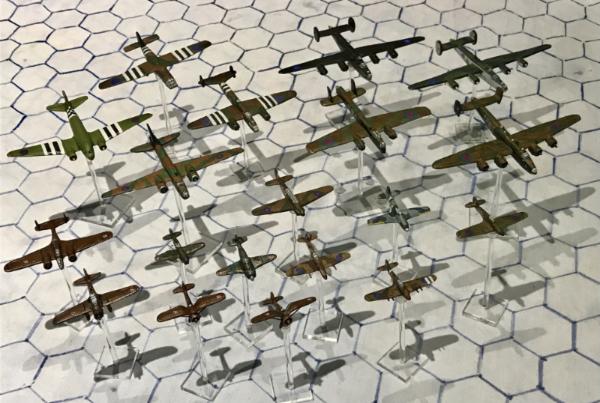
Turns out there was a whole lot more to it than just those funny fellas in the Battle of Britain movie. But if you’ve had enough and you want me to stop my Polish Chatter, or as they might say,“Zamkniesz się wreszcie?”
My response is “Repeat Please!”